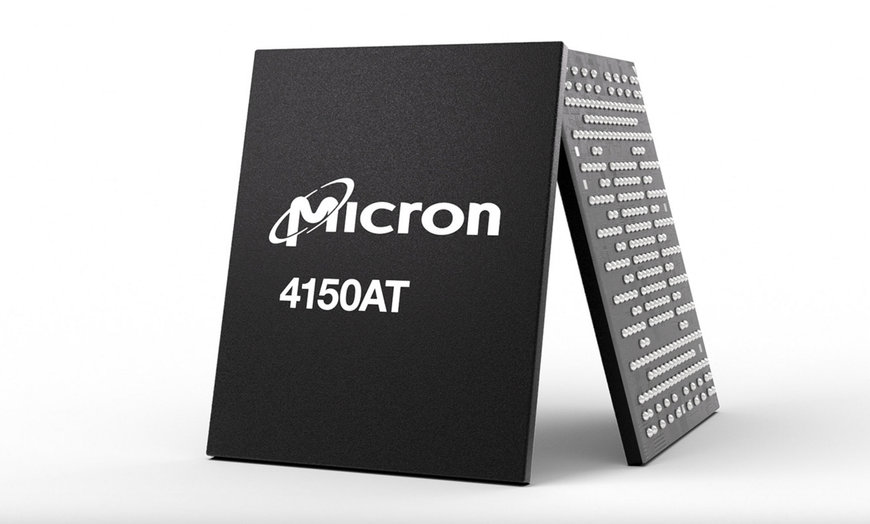www.auto-innovations.net
11
'24
Written on Modified on
Micron News
MICRON UNVEILS FIRST QUAD-PORT SSD FOR AI VEHICLE WORKLOADS
Micron’s virtualized, multiport 4150AT SSD enables a new model of centralized decision-making for increasingly complex, software-defined vehicles.

Micron announced it is sampling the automotive-grade Micron 4150AT SSD, the world’s first quad-port SSD, capable of interfacing with up to four systems on chips (SoCs) to centralize storage for software-defined intelligent vehicles. The Micron 4150AT SSD combines market-leading features such as single-root input/output virtualization (SR-IOV), a PCIe® Generation 4 interface and ruggedized automotive design. With these features, the automotive-grade SSD provides the ecosystem with data center-level flexibility and power.
Micron’s 4150AT SSD brings enterprise-class speeds to consumer vehicles, with random read and write speeds above 600,000 input/output operations per second (IOPS) and above 100,000 IOPS, respectively, for a 4-kilobyte transfer. This high performance allows the drive to efficiently manage data streams from multiple SoCs at once, making it an ideal solution for vehicles that must increasingly multitask to handle diverse systems, from advanced driver-assistance systems (ADAS) to in-vehicle infotainment (IVI) to AI-enabled cabin experiences.
Micron built its 4150AT SSD to provide powerful, customizable features inspired by the design of data center SSDs but tailored to the unique challenges of next-generation automotive architectures including:
- Multi-port capability: The first SSD across any end market with four ports, the Micron 4150AT SSD can connect up to four SoCs, bringing unmatched flexibility and creating a single source of truth. For example, an automotive OEM can connect one port to an ADAS system and another to an IVI system, allowing each to store private data while accessing a common set of critical map data and reducing cost per gigabyte of storage. This boosts performance and dissolves bottlenecks as both can access shared data simultaneously and alleviates the need to keep redundant copies of data. The 4150AT’s quad ports also reduce the need for extra storage devices. Since existing solutions can typically connect to only one SoC on their own, they tend to get placed locally with each automotive system — leading to unused capacity; or alternatively, require OEMs to utilize a costly automotive-grade PCIe switch to connect a drive to multiple SoCs. By centralizing storage for multiple systems, the SSD dramatically improves efficiency while streamlining architecture.
- Virtualization: The 4150AT’s SR-IOV capability provides high performance for heavy multi-host workloads of up to 64 virtual machines (VMs). The unique virtualization gives each SoC and its virtual machines an isolated storage region for local processing while sharing a pool of storage, maximizing efficiency. This support for multi-host workloads is essential as today’s automotive SoCs increasingly use VMs to multitask across different functions, from autonomous driving to vehicle-to-vehicle communication. The SR-IOV capability offers an advantage by directing input/outputs (I/Os) from the VMs directly to the SSD hardware, contrasting with the typical paravirtualization in which I/Os are routed through a software hypervisor to the SSD, creating latency. By bypassing the software layer, the drive improves random read performance up to three times.
- Boosted security: Due to its unique virtualization, the 4150AT drive also enables increased security for carmakers. Based on the SR-IOV virtualization, the data of each VM is isolated from others in the hardware to mitigate data or code leakage while curtailing hacking attempts in one VM from compromising another — maintaining critical data privacy and security.
- Customizable endurance modes: Micron’s 4150AT SSD is built with its triple-level cell (TLC) NAND but can be configured to support single-level cell (SLC) and high-endurance (HE-SLC) data endurance groups too, which respectively offer 20 times and 50 times the endurance of TLC, to best meet unique data requirements. For example, the HE-SLC endurance group can be used for heavy-write use cases such as continuous black box data recording, in which cars must constantly rerecord critical data from sensors, cameras and lidar. In such a scenario where data is being programmed and erased every few minutes, the HE-SLC mode offers the required endurance while eliminating the need for more expensive volatile memory such as DRAM.
- Designed for the automotive industry’s rigorous requirements: The Micron 4150AT SSD delivers Automotive Safety Integrity Level B (ASIL-B) capability to support safety system requirements and is offered in a ball grid array package to help withstand the shock and vibration typical of vehicles’ rugged environments. Like all of the solutions in Micron’s automotive-grade portfolio, the drive is engineered to withstand the extended temperature ranges found in vehicles.
Micron is now delivering samples of the 4150AT SSD to automotive customers worldwide. The drive is offered in capacities up to 1.8 terabytes to enable efficient storage of AI algorithms, large language models, advanced infotainment and telemetry data for the next generation of vehicles.

